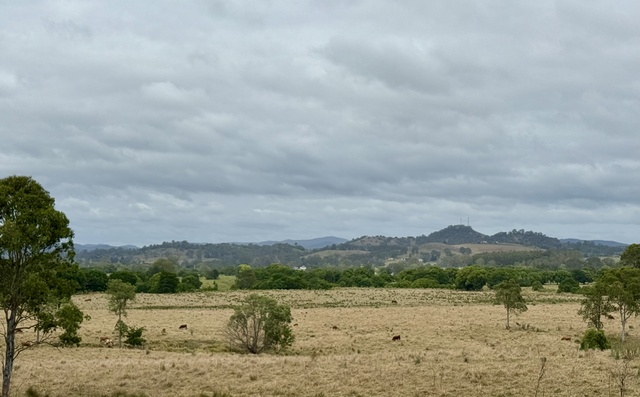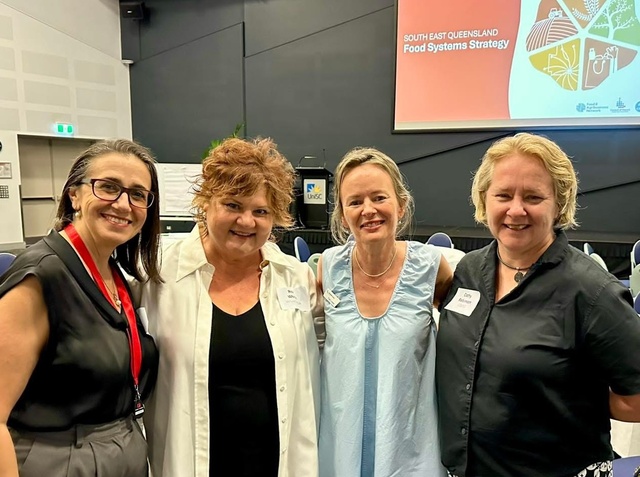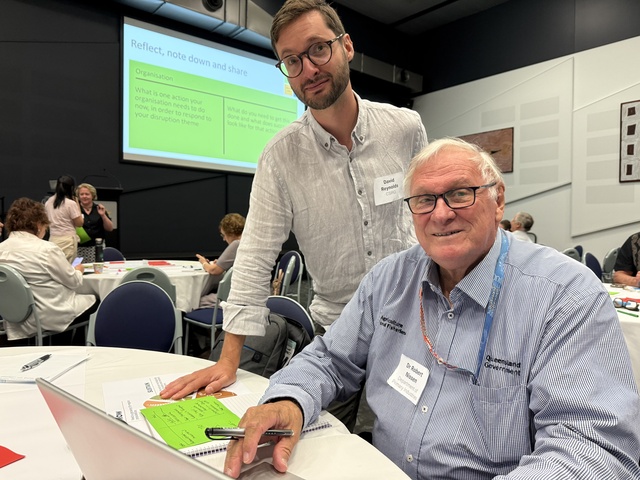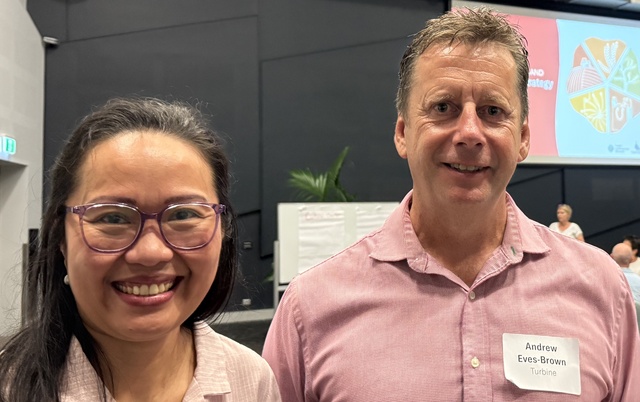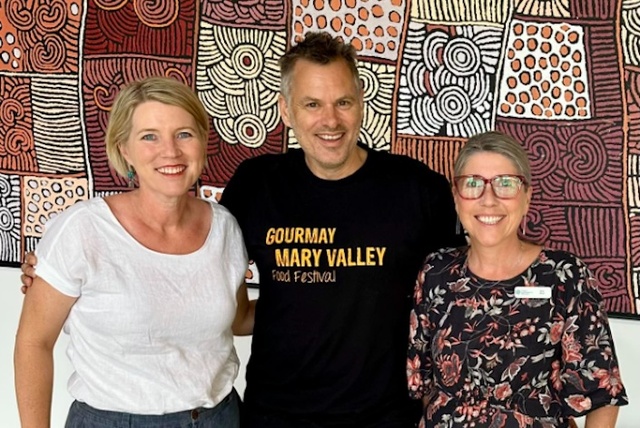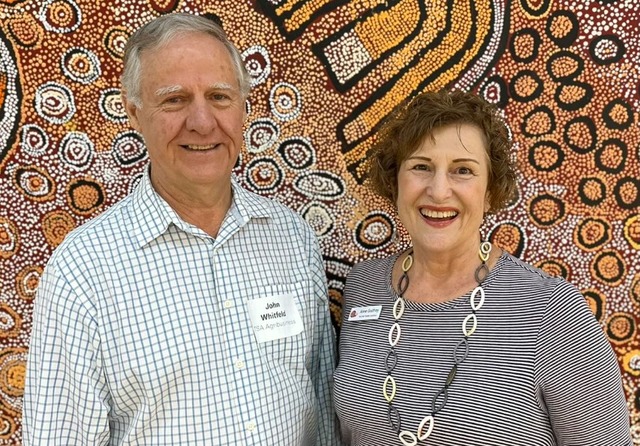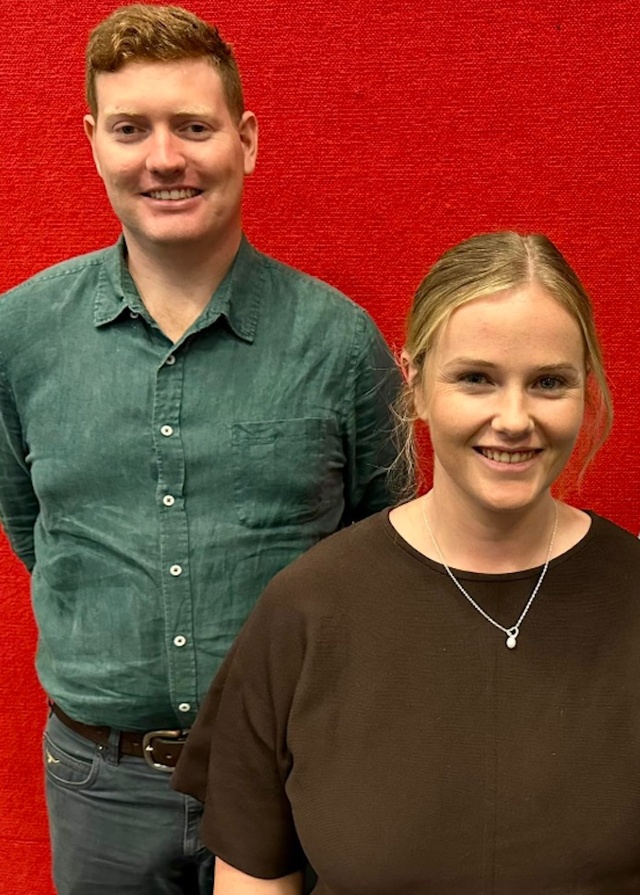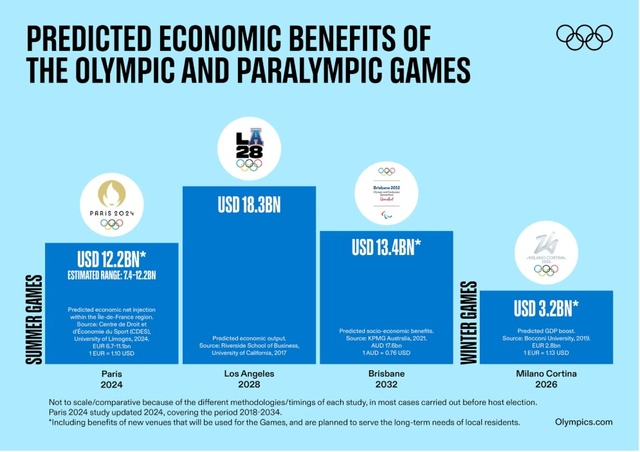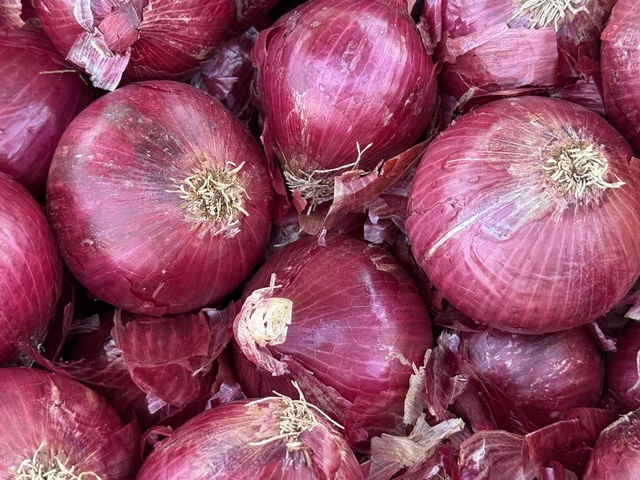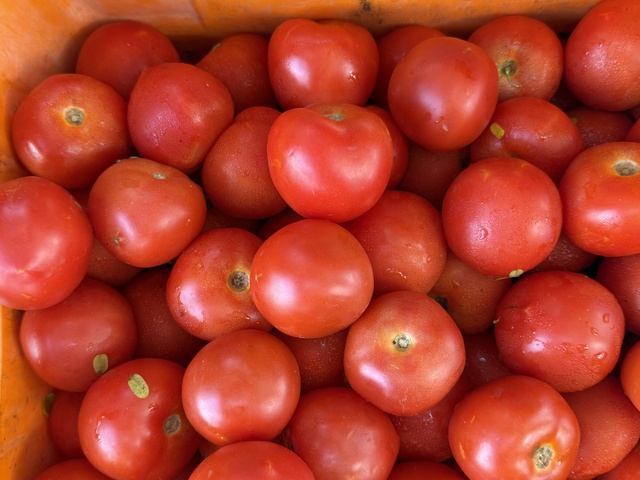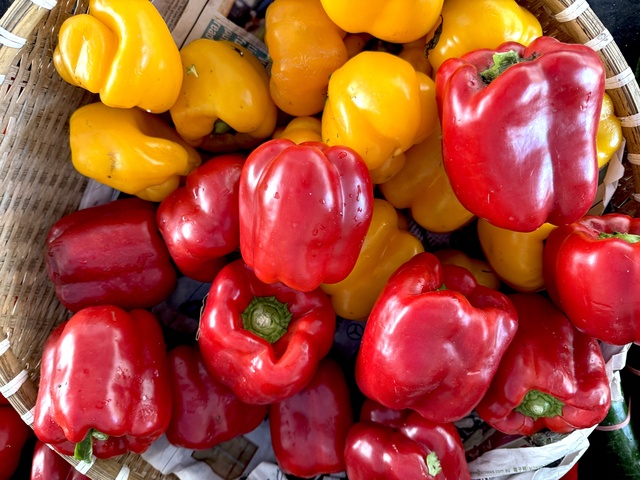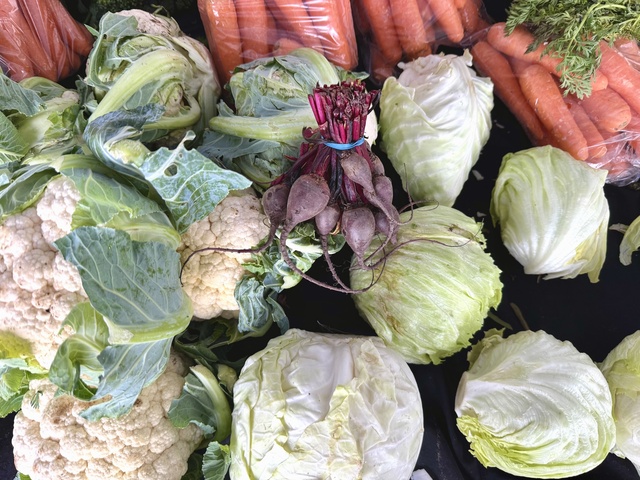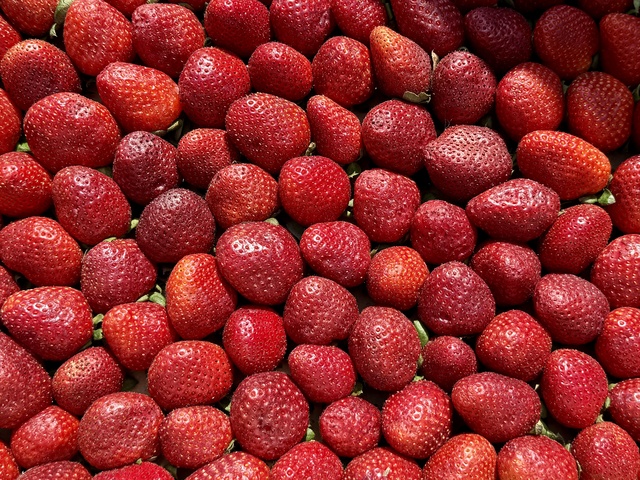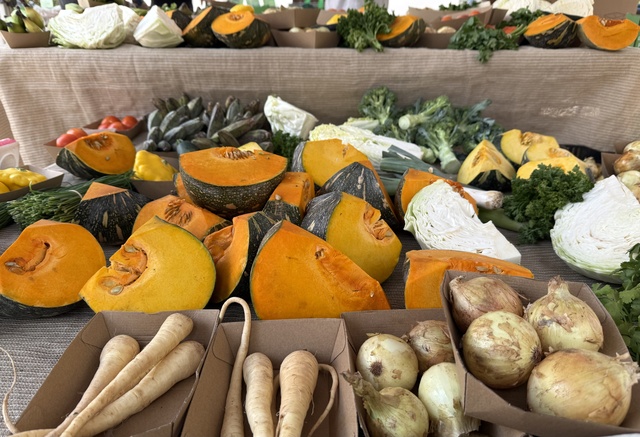There have only been two other events in Australia in the past 40 years that have been as significant … the 1988 Brisbane World Expo and the 2000 Sydney Olympic and Paralympic Games.
Again, the eyes of the world will be on Australia for the 2032 Olympic and Paralympic Games.
To be centered on Brisbane, regional Queensland and other states, the Olympics are already attracting massive interest for many reasons.
Among them is the intrigue about this little-known continent on the “other’’ side of the world. Yet it is also due to the fact that these Games will be very much a regional event, encouraging sustainability and on-going use of infrastructure.
At a CSIRO breakfast forum at the University of the Sunshine Coast, participants looked at ways local food could be a part of the world’s biggest, most historic of sporting events.
Later in the week, GourMay 2026 was launched … a month-long festival celebrating food in the Mary Valley. Their long-term vision is also focussed on providing an event that will show visitors the authenticity and the value of fresh, local food.
World Expo 88 and Sydney 2000 exemplified what a great show Australia can put on. The world is waiting to see what Queensland can produce.
It was a 12-year timeline for Queensland to get ready since the announcement of the winning bid to host the Games – now it is seven.
Individuals as well as businesses are lining up to be involved. It is a matter of whether we can deliver on the potential.
The CSIRO’s South East Queensland Food Systems Strategy Sunshine Coast forum highlighted that the Olympics will have a dramatic impact on the economy and that direct suppliers as well as contractors will benefit.
Yet preparing for a four-week fast burn in 2032 is not the only game in town.
The population growth for the region in that time will have ramped up, so any increase in local food production will become a slow burn in order to cater for this on-going demand.
Roz White, chair of the Sunshine Coast 2032 project to plan for the Olympics, spoke of the very real possibilities and opportunities for the region in the lead-up to and during the Games.
Based on outcomes from Paris 2024, 83 percent of direct suppliers and contractors to the Games were Small/ Medium Enterprises (SME’s).
The Brisbane 2032 Procurement Program will help deliver a successful Olympic and Paralympic Games – forecast to generate $8.1 billion in benefits for Queensland and $17.6 billion in benefits for Australia.
Not only will the Games provide a once-in-a-generation opportunity to showcase the wider region to the world but provide legacy programs and projects for future generations.
This is designed to drive economic, social and environmental outcomes that ensure lasting benefits before, during and after the Games.
“Our region grows and produces the best food in the world,’’ Roz said. “What a wonderful opportunity for us to showcase local food.’’
Roz and Michael White own six White’s IGA stores on the Sunshine Coast, and support local food producers with their Locavore program – a way of connecting the community with the freshest possible products.
“A locavore is a person who chooses to consume food that is grown, raised, or produced locally, usually within 200 kilometres from home and that is our mantra at White’s IGA.’’
The forum was told there is a definite need to scale up to the Games as the major event but in doing so be ready to serve the expected population growth by that time.
If you think about big events and games … it doesn’t get much bigger than this.
The region is home to among the highest number of small producers in Australia – growing everything from mangoes and avocados to dragonfruit and yuzu, from ginger and macadamias to berries and persimmons, feijoas and lychees.
There are dairy products such as yogurts and cheese to poultry, beef and pork. Our seafood has achieved world-wide recognition, along with native foods and an emerging wine industry.
Through it all is the branding of clean, green and fresh. Food that is nourishing.
“There’s a lot of discussion around the world about local food and collaboration in the food chain system,’’ Roz White said.
“You can’t sell a secret … and customers are looking for this type of experience when they shop to be able to access things that are unique and nutritional.
“Nourish the family and nourish the community is part of our Locavore program.
“Locavore was established from a very small group of suppliers in 1998 and has grown to more than 200 suppliers within 200km.
“Less transportation means less food miles.
“The Locavore program shows that consumers want fresh, local food.
“The Games provide an opportunity to come together and support each other … this is an opportunity for this region like no other.
“We will be home to some incredible athletes. When Brisbane 2032 was announced the world-wide internet search for Brisbane went up 15,000 percent.
“This will be a showcase to the world, and what better than to showcase the food that has been grown here.’’
The procurement strategy of Brisbane 2032 will have a clear focus on indigenous culture and local foods, providing an overwhelmingly opportunity for small to medium entities.
In Paris 2024, the perception that it was all big business that would benefit was wrong. There was a specific focus on helping very small businesses and local companies.
More than 800 businesses from the social and solidarity economy participated in delivering the Paris Games. This included employing people from a wide sector of the community.
Collaboration will be needed in South East Queensland as no business should be expected to scale up for a four-week program.
The thing to remember is that the population will be such by then that it can be ongoing. Now is the time to get ready.
Steps to be taken include Environmental, Social, and Governance registration (ESG) to meet the sustainability and ethical impact criteria needed as a producer.
Provision of supply will be a major issue due to the seasonal nature of produce, the ability of processors, and environmental issues.
Hubs are going to be vital to provide scale for small producers and to mitigate against delivery risks.
The overriding impediment to food production in the region is the rate of urban sprawl which is impacting the quality land available for agriculture and horticulture.
It’s a serious factor as fresh local food is going to be important to ensure supply.
Otherwise more and more food is going to need to be imported from other areas or from overseas.
The SEQ Food Systems Forum sparked ideas, shared stories, and explored how local voices can help shape the SEQ Food Strategy – it provided a blueprint for a more sustainable, resilient, and connected regional food system.
By 2046, South East Queensland will be home to about six million people. The Sunshine Coast-Noosa-Gympie will be in excess of 500,000.
That’s a lot of hungry mouths to feed – and it provides a big opportunity to build smarter and more sustainable ways in which to grow, share, and enjoy food.
With the challenges of climate change, population growth, supply chain issues and global events ahead, collaboration is key.
“This forum was a critical step forward in exploring best practice models to create collaborative, sustainable and viable local food systems for the future,’’ Roz White said.
“There is a shift in consumer sentiment to support local and it also makes good business sense but it can be fragmented and challenging for operators.
“What makes this initiative so powerful is that researchers, retailers and producers are coming together to identify and solve these challenges to unlock new ways of doing business and build awareness and education programs to connect the entire supply chain.’’
These include the CSIRO, University of Queensland, University of the Sunshine Coast, industry bodies such as Food Agribusiness Network (FAN), Turbine Sunshine Coast food and beverage manufacturing and education precinct, local government agencies and community groups.
The SEQ Food Systems Strategy is being co-created by CSIRO, the Council of Mayors (SEQ), local governments, the Food Connect Foundation, the Food Agribusiness Network FAN, government agencies, universities, and community groups.
Together, they’re designing evidence-based goals and actions to strengthen SEQ’s food resilience and support local prosperity.
During the next six months, the conversation will continue – whether as a grower, maker, or conscious consumer.
Imagine being able to nourish not just our families but our 2032 Olympic athletes with wholesome, nutritious, locally grown and sourced food.

